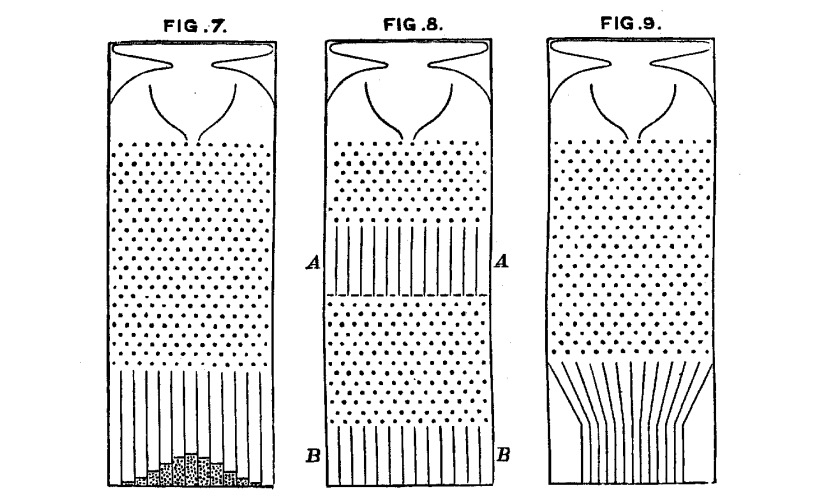
Tim of Grand Illusions shows off this nifty normal curve distribution demonstration machine called the Galton Board. It has 3,000 tiny metal beads that fall through a grid of pegs, landing into one of 28 columns at the bottom. Each time a bead hits a peg, it moves to the left or the right. It's rare for a bead to fall to the left every time it hits a peg on the way down. It's equally rare for it to fall right every time it hits a peg on the way down. That's why most of the beads end up in the columns in the center.
The Galton Board is math in motion, demonstrating centuries-old mathematical concepts in an innovative desktop device. It incorporates Sir Francis Galton's (1822-1911) illustration of the binomial distribution, which for a large number of beads approximates the normal distribution. It also has a superimposed Pascal's Triangle (Blaise Pascal, 1623-1662), which is a triangle of numbers that follows the rule of adding the two numbers above to get the number below. The number at each peg represents the number of different paths a bead could travel from the top peg to that peg. The Fibonacci numbers (Leonardo Fibonacci, 1175-1250), can also be found as the sums of specific diagonals in the triangle. When rotated on its axis, the 3,000 beads cascade through rows of symmetrically placed pegs in the desktop-sized Galton Board. When the device is level, each bead bounces off the pegs with equal probability of moving to the left or right. As the beads settle into the bins at the bottom of the board, they accumulate in approximately a bell curve. Printed on the board are the bell curve, the average and standard deviation lines. The bell curve, also known as the Gaussian distribution (Carl Friedrich Gauss, 1777-1855), is important in statistics and probability theory. It is used in the natural and social sciences to represent random variables, like the beads in the Galton Board. The Galton Board is reminiscent of Charles and Ray Eames' groundbreaking 11-foot-tall "Probability Machine," featured at the 1961 Mathematica exhibit. An even larger Eames probability machine was showcased at IBM's Pavilion for the 1964 World's Fair in New York. Both the Galton Board and the superimposed Pascal's Triangle incorporate many related mathematical, statistical and probability concepts. Can you spot them all?
It's available at Grand Illusions and Amazon.
"Order in Apparent Chaos: I know of scarcely anything so apt to impress the imagination as the wonderful form of cosmic order expressed by the 'Law of Frequency of Error.' The law would have been personified by the Greeks and deified, if they had known of it. It reigns with serenity and in complete self-effacement amidst the wildest confusion. The huger the mob, and the greater the apparent anarchy, the more perfect is its sway. It is the supreme law of Unreason. Whenever a large sample of chaotic elements are taken in hand and marshalled in the order of their magnitude, an unsuspected and most beautiful form of regularity proves to have been latent all along." -- Sir Francis Galton, Natural Inheritance, 1889



